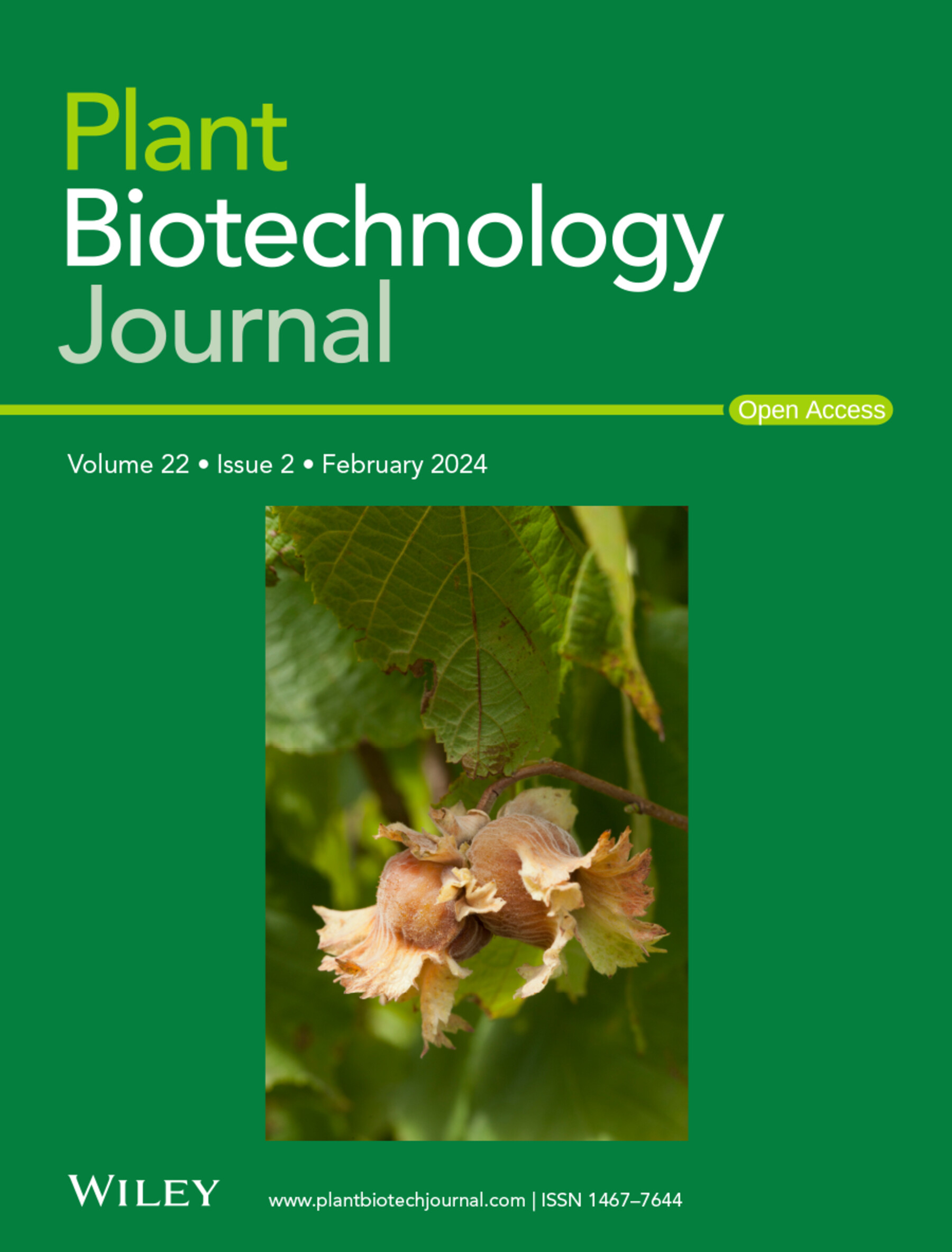马铃薯功能基因组学模型系统Jan和mini-Jan
IF 10.1
1区 生物学
Q1 BIOTECHNOLOGY & APPLIED MICROBIOLOGY
引用次数: 0
摘要
马铃薯(Solanum tuberosum)是世界上第三重要的粮食作物。虽然马铃薯基因组已经完全测序,但马铃薯的功能基因组学研究滞后于其他主要粮食作物,主要原因是缺乏马铃薯模型实验品系。在这里,我们提出了一个二倍体马铃薯系,‘ Jan ’,它具有所有必要的特征,便于功能基因组学研究。自花授粉7代后,简表现出高水平的纯合子。Jan生机勃勃,肥力强,块茎产量高,性状突出。此外,它还具有较高的再生速率和优异的转化效率。我们为Jan建立了染色体尺度的基因组组装,对其基因进行了注释,并鉴定了与马铃薯参考基因组组装DMv6.1相关的同源物,以促进功能基因组学。为了使植物结构小型化,我们通过CRISPR/ cas9介导的靶向矮秆和直立基因的诱变,开发了两个紧凑和矮秆的“mini-Jan”品系。一个迷你简突变体,迷你简,是完全肥沃的,将允许在有限的生长室和温室空间进行更高通量的研究。因此,Jan和mini-Jan提供了一个强大的模型系统,可以用于马铃薯的基因编辑和功能基因组学研究。本文章由计算机程序翻译,如有差异,请以英文原文为准。
Jan and mini-Jan, a model system for potato functional genomics
Potato (Solanum tuberosum) is the third-most important food crop in the world. Although the potato genome has been fully sequenced, functional genomics research of potato lags behind that of other major food crops, largely due to the lack of a model experimental potato line. Here, we present a diploid potato line, ‘Jan,’ which possesses all essential characteristics for facile functional genomics studies. Jan exhibits a high level of homozygosity after seven generations of self-pollination. Jan is vigorous, highly fertile and produces tubers with outstanding traits. Additionally, it demonstrates high regeneration rates and excellent transformation efficiencies. We generated a chromosome-scale genome assembly for Jan, annotated its genes and identified syntelogs relative to the potato reference genome assembly DMv6.1 to facilitate functional genomics. To miniaturize plant architecture, we developed two ‘mini-Jan’ lines with compact and dwarf plant stature through CRISPR/Cas9-mediated mutagenesis targeting the Dwarf and Erecta genes involved in growth. One mini-Jan mutant, mini-JanE, is fully fertile and will permit higher-throughput studies in limited growth chamber and greenhouse space. Thus, Jan and mini-Jan offer a robust model system that can be leveraged for gene editing and functional genomics research in potato.
求助全文
通过发布文献求助,成功后即可免费获取论文全文。
去求助
来源期刊

Plant Biotechnology Journal
生物-生物工程与应用微生物
CiteScore
20.50
自引率
2.90%
发文量
201
审稿时长
1 months
期刊介绍:
Plant Biotechnology Journal aspires to publish original research and insightful reviews of high impact, authored by prominent researchers in applied plant science. The journal places a special emphasis on molecular plant sciences and their practical applications through plant biotechnology. Our goal is to establish a platform for showcasing significant advances in the field, encompassing curiosity-driven studies with potential applications, strategic research in plant biotechnology, scientific analysis of crucial issues for the beneficial utilization of plant sciences, and assessments of the performance of plant biotechnology products in practical applications.
 求助内容:
求助内容: 应助结果提醒方式:
应助结果提醒方式:


